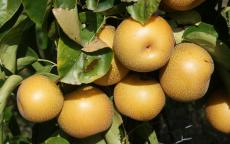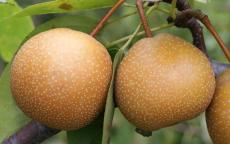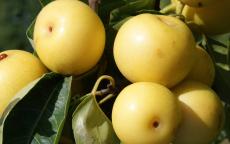Asian pear trees
Asian pears are grown for their golden fruits, which have a crisp sweet juicy flesh.
Korean Giant
Korean Giant (or O;ympic) has potentially the largest fruits of any Asian pear variety.- Picking season: Late
- Self-fertility: Not self-fertile
Niitaka
Niitaka is an Asian pear variety producing very large crisp russeted fruits.- Picking season: Mid
- Self-fertility: Not self-fertile
Shinko
A classic Asian pear, with large golden brown russeted fruits which have a crisp sweet flesh.- Picking season: Late
- Self-fertility: Not self-fertile
Shinseiki
This popular early-season Asian pear variety produces crisp sweet-flavored pears, which can be kept for up to 3 months.- Picking season: Early
- Self-fertility: Partially self-fertile
YoinashiTM
Yoinashi is a mid-season Asian pear, with large golden brown russeted fruits.- Picking season: Mid
- Self-fertility: Not self-fertile
How to choose Asian pear trees
Asian pears are highly prized for their crisp juicy flesh and sweet sugary flavors. The fruits are round, and usually a golden or golden green russet color.
Asian pear trees have many ornamental qualities too - as well as the delightful fruits, the spring blossom is also attractive, while the leaves often emerge with bronze tints, and may turn red or orange in the fall.
Asian pears are not particularly cold-hardy, but should be successful in sheltered locations in zone 5, and suitable for most situations in zone 6 and above. They are all susceptible to fireblight - but less susceptible than European pears. They tolerate warm southern climates fairly well.
Most Asian pears are not self-fertile, but different varieties will usually cross-pollinate since they all flower at around the same time. In addition they can be pollinated by many early or mid-bloom European pear varieties - Bartlett is usually a good choice.
Asian pears tend to be naturally precocious, come into bearing from an early age.
The picking season for Asian pears is similar to that of European pears - the first varieties are ready at about the same time as early European pears like Bartlett.
Although Asian pears are characterized by their sugary sweet flavors, they are also high in fiber and antioxidants.




